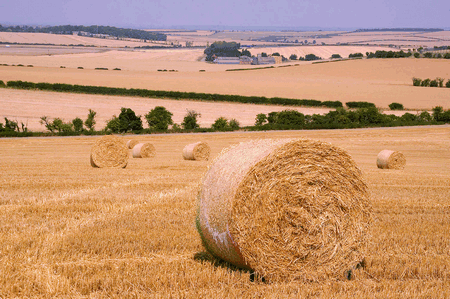Farm land will weather credit crunch and profitability squeeze

Farmland values will continue to grow in the next 12 months, but the rate of growth will be slower than was seen this year.
That will surprise few given the recent gloomy economic prognosis from Mervyn King, governor of the Bank of England, and the growing threat of “stagflation” – where economic growth stalls and inflation continues to rise. But land values are likely to escape the effects of both a bearish economic outlook and soaring variable costs, such as fuel and fertiliser.
For farming landlords and owner-occupiers, the fundamentals remain broadly unchanged. Demand for UK land is expected to continue to grow with overseas buyers, City funds, institutional investors, lifestyle buyers and farming businesses all competing for acres on a small group of islands.
There has been speculation outside agriculture that last year’s hike in cereals prices, stronger returns from milking and more realistic values for beef and sheep all contributed to the rush to buy farmland. But now the message of higher fuel, fertiliser and feed costs squeezing farming margins has led many to question whether current land values can be sustained.
However, there seems very little evidence that such a direct link exists.

Jason Beedell, head of research at Smiths Gore, says that despite the popular belief, the link is weak. “Farm incomes do have a bearing on land values, but not a very influential one.
“Despite six months of economic uncertainty nationally, we’ve seen demand for farmland continue to rise. Demand for land hasn’t slowed as input prices have risen and there are no indications that it will weaken.”
However, he acknowledges that there are some farms sitting on the market. “The headline figures of £6000-7000/acre are affected by a significant residential element. It’s true that bare land values are also up, but the fact is that a great deal of land is changing hands privately. The split is usually about half-and-half, but I wouldn’t be surprised if 60% of land is being traded off-market.
“It’s almost become a two-speed market. Some bare land sells at £6000-7000/acre, but a lot is still traded at £3000-5000/acre.”
This didn’t mean that farmland without any attractive residential, amenity or sporting element would decline in value, he said. “Prices are really immune from what’s going on in the wider economy. It doesn’t matter if we do have a few years of stagflation. Our forecast is that land values will continue to grow for the next five years, but the rate of growth will be 5-7%, rather than the 20% seen in the last 12 months.”
There is further evidence that despite the headline-grabbing figures of £8000/acre and above, not all farmland is scaling such heights, according to Jeff Paybody, rural partner in agent Howkins & Harrison. “Although we’ve sold several parcels of land at over £8000/acre, they have benefited from being surrounded by big owner-occupiers who wanted it. On the other hand, I’ve heard of a block of land in Oxfordshire that is struggling to sell for £5000-£5500/acre, because the neighbours just aren’t interested.”
Andrew Shirley, head of rural research at Knight Frank, believes a pattern can be traced. “Although farmland sales and return from arable farming do not directly correlate, there is no doubt that the increased optimism among farmers on the back of increased cereals prices has led to a greater enthusiasm to buy land. Our figures show that in the first three months of the year, 60% of farmland purchases were by farmers or farming businesses.”
Strutt & Parker’s Mark McAndrew has no doubts that farmland values are divorced not only from farm income trends, but also from current economic woes – he believes his firm has sold more land in England this year than any other agent.
“You have to look beyond the short term. The headline writers have been writing about ‘fields of gold’ and then about farming profitability being squeezed. But if we look beyond the short term, there are real signs for encouragement.”
Buyers still significantly outnumbered sellers, and future demands on land from both biofuels and food crops to feed a growing world population would continue to support land values – regardless of short-term trends in British farming fortunes, he said.
